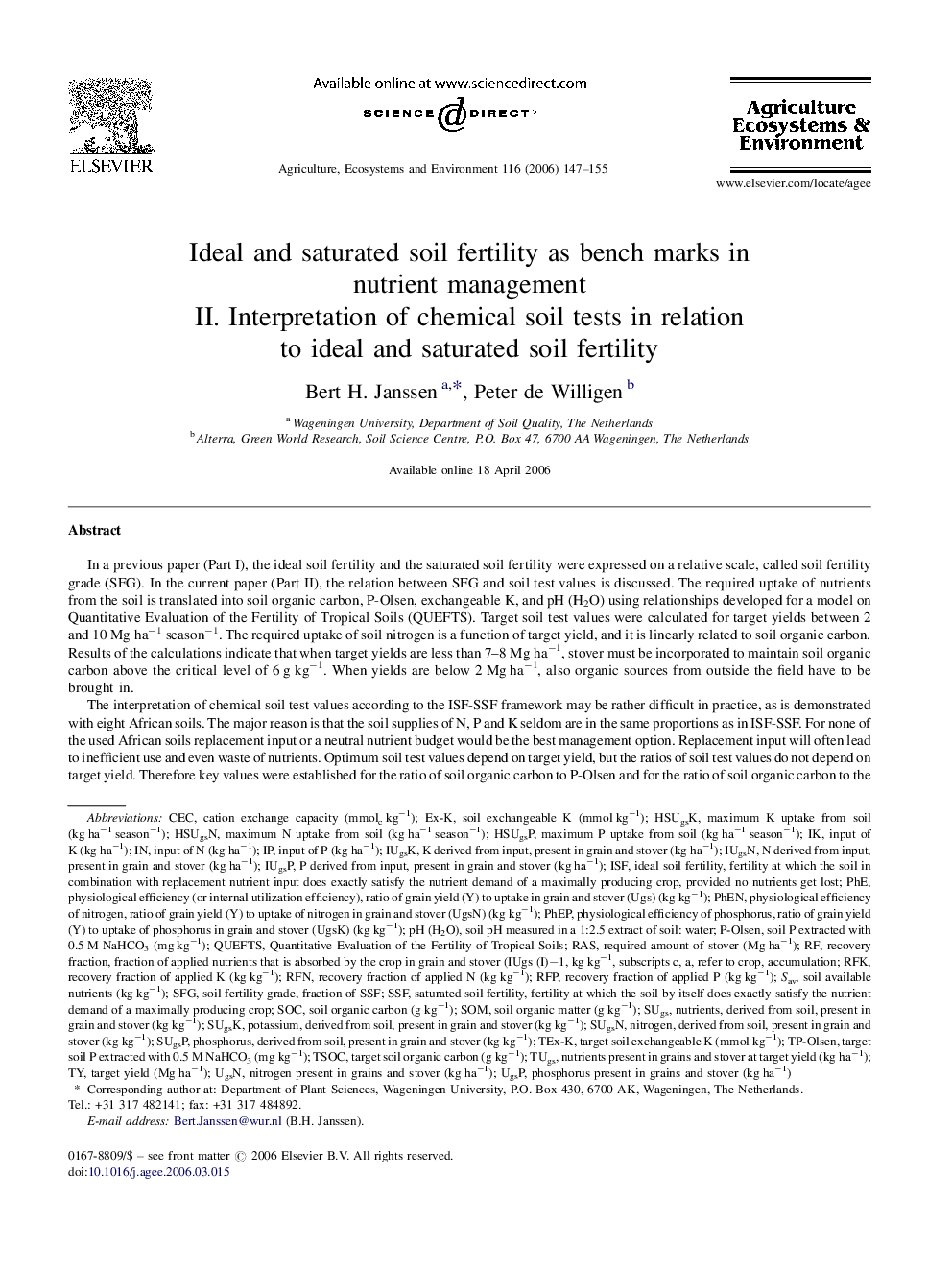| کد مقاله | کد نشریه | سال انتشار | مقاله انگلیسی | نسخه تمام متن |
|---|---|---|---|---|
| 2416014 | 1552147 | 2006 | 9 صفحه PDF | دانلود رایگان |

In a previous paper (Part I), the ideal soil fertility and the saturated soil fertility were expressed on a relative scale, called soil fertility grade (SFG). In the current paper (Part II), the relation between SFG and soil test values is discussed. The required uptake of nutrients from the soil is translated into soil organic carbon, P-Olsen, exchangeable K, and pH (H2O) using relationships developed for a model on Quantitative Evaluation of the Fertility of Tropical Soils (QUEFTS). Target soil test values were calculated for target yields between 2 and 10 Mg ha−1 season−1. The required uptake of soil nitrogen is a function of target yield, and it is linearly related to soil organic carbon. Results of the calculations indicate that when target yields are less than 7–8 Mg ha−1, stover must be incorporated to maintain soil organic carbon above the critical level of 6 g kg−1. When yields are below 2 Mg ha−1, also organic sources from outside the field have to be brought in.The interpretation of chemical soil test values according to the ISF-SSF framework may be rather difficult in practice, as is demonstrated with eight African soils. The major reason is that the soil supplies of N, P and K seldom are in the same proportions as in ISF-SSF. For none of the used African soils replacement input or a neutral nutrient budget would be the best management option. Replacement input will often lead to inefficient use and even waste of nutrients. Optimum soil test values depend on target yield, but the ratios of soil test values do not depend on target yield. Therefore key values were established for the ratio of soil organic carbon to P-Olsen and for the ratio of soil organic carbon to the square root of exchangeable K. Based on these key values, a new classification scheme with recommended input ratios is presented. The scheme has six classes for N and P ratios, and seven classes for N and K ratios.
Journal: Agriculture, Ecosystems & Environment - Volume 116, Issues 1–2, August 2006, Pages 147–155